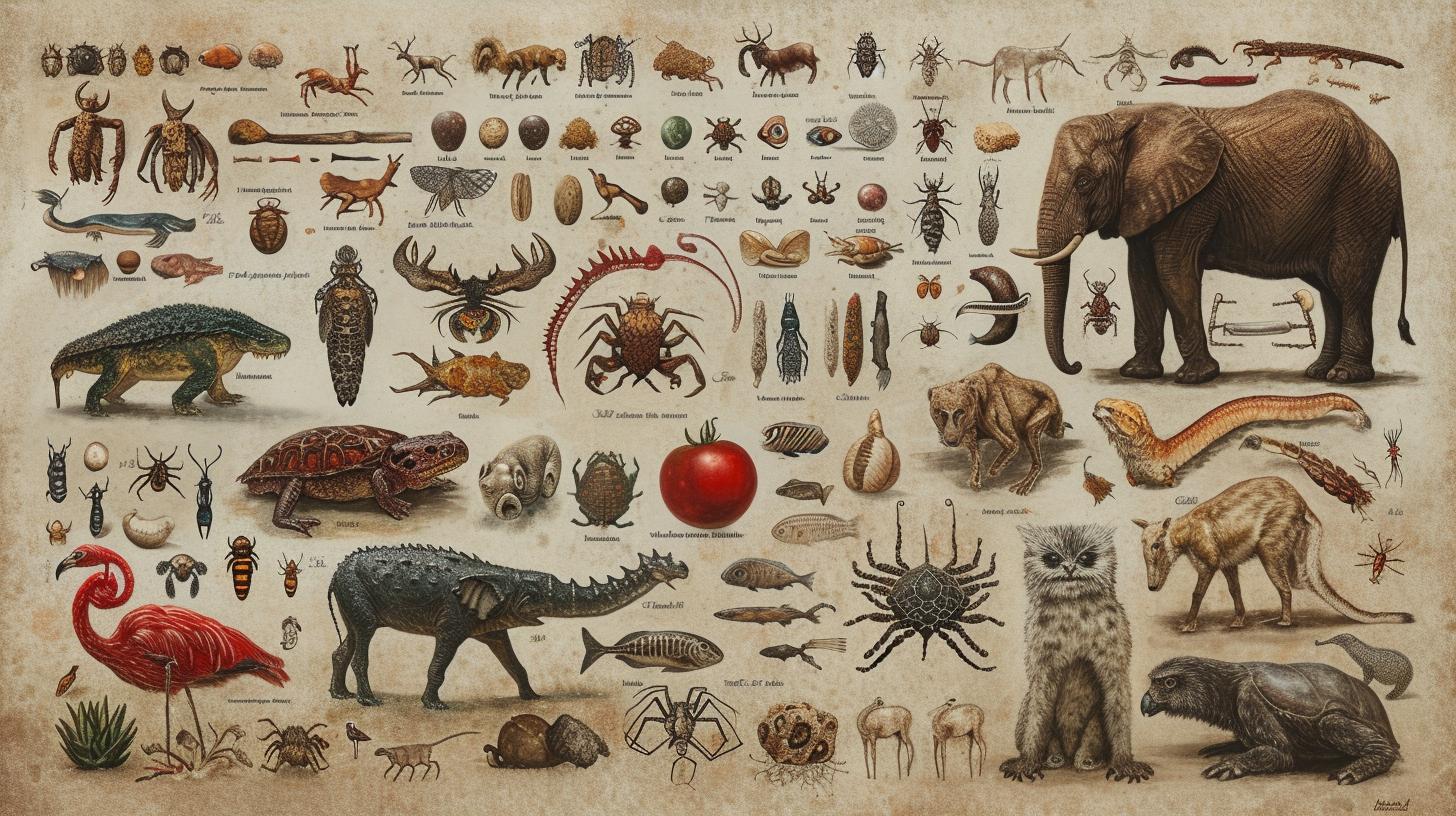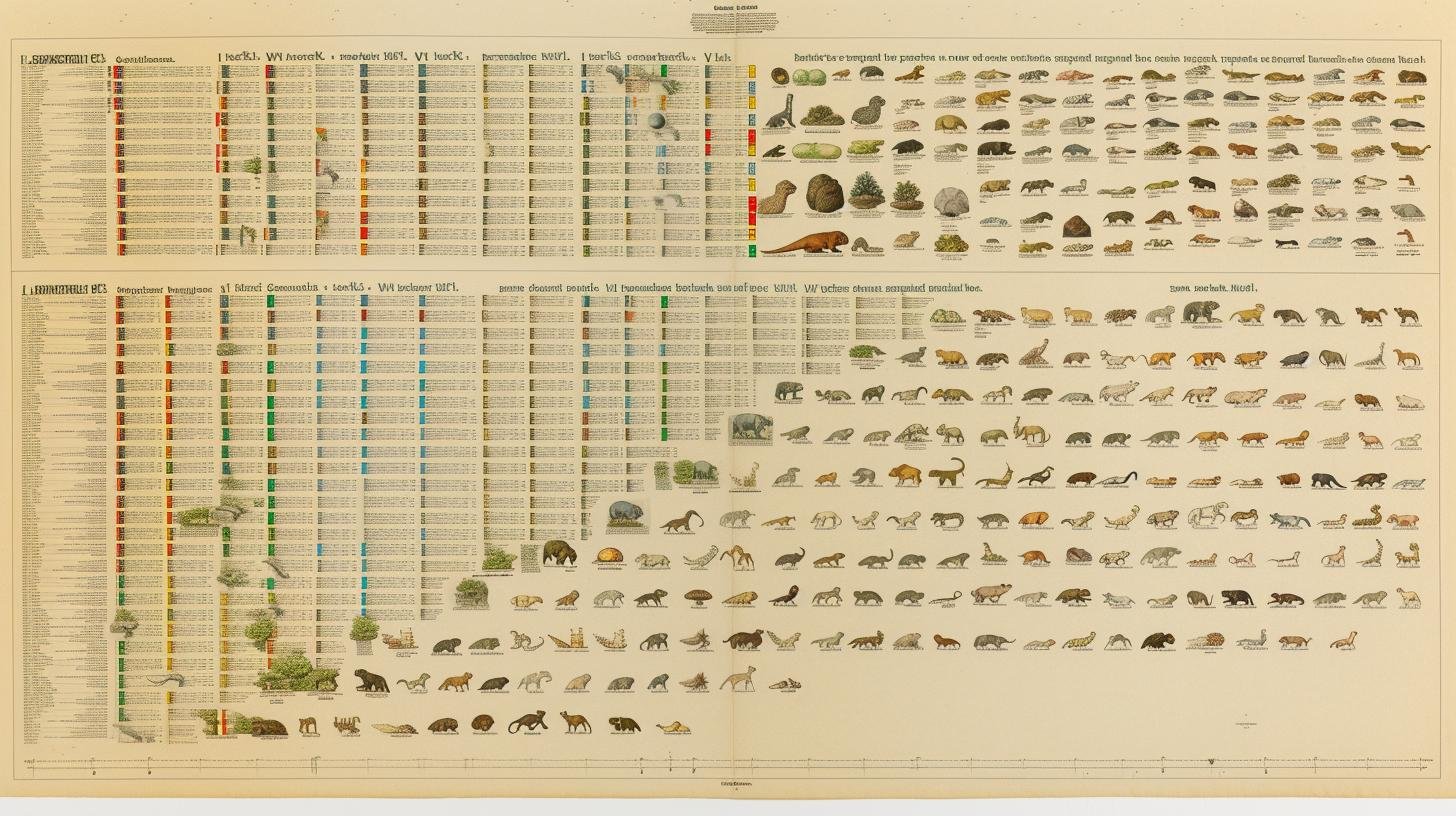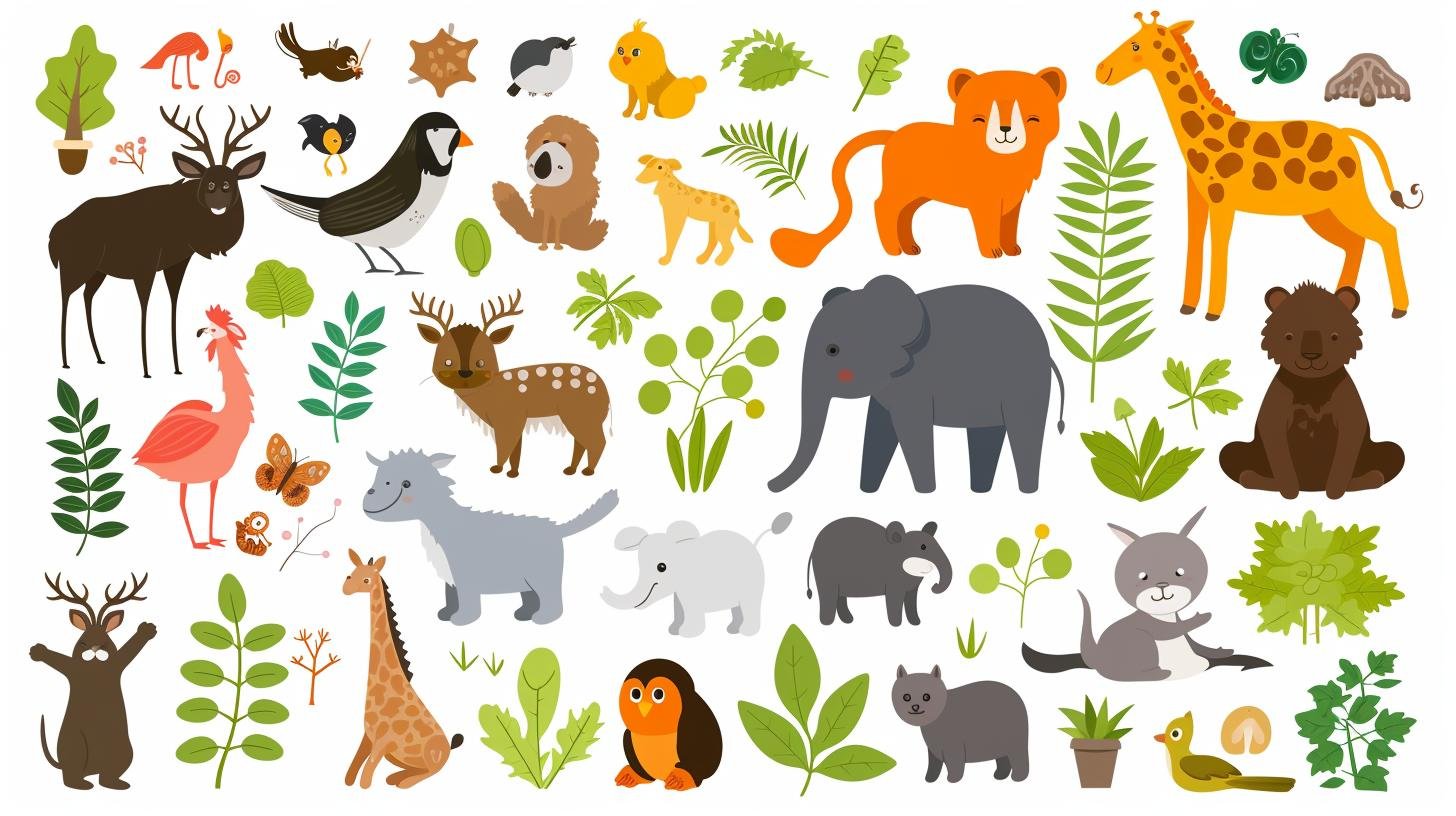Animals and their food chart provide fascinating insights into the diverse dietary habits of creatures from all around the world. From herbivores to carnivores, omnivores to insectivores, each species has unique feeding characteristics that contribute to their survival in the wild. This article aims to explore the various food charts of animals, shedding light on their eating habits and preferences.
As we delve into the dietary habits of animals, we will uncover how each category of creatures obtains its sustenance. Whether it’s grazing on plants, hunting for prey, or feasting on fruits, the diet of animals plays a crucial role in their existence. By understanding the feeding patterns of different species, we can gain a deeper appreciation for the diversity and complexity of life in the animal kingdom.
Throughout this exploration, we will discuss herbivores and their plant-based diet, carnivores and their meat-eating habits, omnivores that consume both plants and animals, insectivores thriving on insects, piscivores with a fish-based diet, frugivores focusing on fruits, nectarivores feeding on nectar, and saprovore that rely on decaying matter. Each section will provide valuable insights into how animals obtain their nutrition and sustain themselves in their natural habitats.
By comprehensively examining the food charts of animals from various ecological niches around the world, we can expand our knowledge of wildlife and gain a deeper understanding of the intricate web of life. So let’s embark on this enlightening journey through the dietary habits of animals and appreciate the marvels of nature’s diverse food chains.
Herbivores
One interesting fact about herbivores is that they spend a large portion of their day grazing in order to obtain enough nutrients from their plant-based diet. Grazing animals have evolved to have teeth that are well-suited for grinding and breaking down tough plant material. Their digestive systems also rely on fermentation chambers to help them extract nutrients from their food.
It’s important to note that not all herbivores eat the same types of plants. For example, while some herbivorous animals prefer grass and other low-lying vegetation, others may specialize in consuming leaves or even specific types of fruits. Understanding the specific dietary habits of different herbivores is crucial for their conservation and welfare in captivity.
| Animal | Plants Consumed |
|---|---|
| Giraffe | Acacia leaves, thorny bushes |
| Cow | Grasses, hay, alfalfa |
| Rabbit | Leafy greens, carrots, celery |
| Deer | Fruits, twigs, shrubs |
Understanding the dietary preferences of herbivorous animals can also be beneficial for agricultural practices and wildlife management. By studying the food charts of these animals, scientists can gain insights into their nutritional needs and make informed decisions regarding habitat conservation and management strategies. Ultimately, understanding the plant-based diet of grazing animals plays a crucial role in ensuring the well-being of these creatures in both natural and human-influenced environments.
Carnivores
Specialized Anatomy and Hunting Techniques
Carnivores often have sharp teeth for tearing flesh and powerful jaws for gripping and subduing their prey. Their bodies are also designed for speed and agility, allowing them to effectively chase down their targets. Some carnivorous animals, such as cheetahs, are renowned for their lightning-fast sprints, while others like crocodiles use stealth and ambush tactics to catch their meals.
Diverse Diet of Carnivores
Not all carnivores exclusively eat large mammals; some may also consume birds, reptiles, fish, or insects. This diverse diet allows them to adapt to various environments and ensures a constant food supply. For example, polar bears primarily feed on seals, while African wild dogs hunt in packs to take down antelopes and other herbivores.
Hunting Strategies and Social Behavior
Carnivorous animals have developed different hunting strategies based on their prey’s behavior and habitat. Some species rely on teamwork and coordination within groups or packs, while others rely on solitary hunting. The social behavior of carnivores often revolves around sharing the spoils of the hunt with family members or members of the same group.

The Impact of Carnivores in Ecosystems
Carnivorous animals play a crucial role in maintaining the balance of ecosystems by controlling populations of herbivorous animals. This regulation helps prevent overgrazing that can deplete plant resources vital for other species in the ecosystem. Furthermore, it promotes healthy competition between species, leading to a dynamic natural environment.
Conservation Challenges for Carnivores
Many carnivorous species face threats such as habitat loss, human-wildlife conflict, poaching, and climate change. Conservation efforts are essential to protect these animals’ habitats and ensure their survival for future generations. By understanding the dietary habits and needs of carnivores, conservationists can develop effective strategies to safeguard these crucial apex predators in various ecosystems.
By examining how meat-eating animals hunt and consume their prey, we gain valuable insight into the intricate relationships between predators and their environments. Understanding the dietary habits of carnivores is not only important for ecological research but also provides a deeper appreciation for these remarkable creatures in the animal kingdom.
Omnivores
Adaptability and Diverse Diet
Omnivores are known for their adaptability, as they can thrive in different ecosystems and climates due to their ability to consume a variety of foods. Their diet may include fruits, vegetables, nuts, seeds, insects, small mammals, fish, and in some cases, even scavenged carrion. This flexible approach to food consumption allows them to take advantage of whatever resources are available in their environment.
Examples of Omnivores
Some well-known examples of omnivorous animals include humans, bears, raccoons, pigs, chickens, crows, and certain species of primates. Each of these animals has evolved specific strategies for obtaining a balanced diet that includes both plant-based and animal-based foods. This diversity highlights the adaptability and resourcefulness of omnivores in the wild.
Challenges in Obtaining Food
Despite their adaptability, omnivores still face challenges in obtaining food. Competition with other species for limited food resources can be intense, especially in densely populated ecosystems. Additionally, changes in habitat due to human activity or natural events can impact the availability of both plant and animal-based foods for omnivorous species.
The Impact on Ecosystems
The presence of omnivorous animals plays a crucial role in maintaining ecosystem balance. By consuming a wide range of foods within their environment, they help regulate populations of plants and animals. However, if an omnivore’s habitat is disrupted or if its preferred food sources become scarce or extinct due to environmental changes or human activity it can have cascading effects on the entire ecosystem.
As we’ve seen from exploring the diets of omnivorous animals across different species: from humans to bears to birds – these creatures play a vital role in keeping ecosystems diverse and balanced through their ability to consume both plant-based and animal-based foods. Understanding the unique dietary habits of omnivores provides valuable insight into the complex relationships between species within ecosystems around the world.
Insectivores
One fascinating aspect of insectivores is their ability to use different hunting techniques to catch their prey. For example, birds like the common flycatcher will use their beaks to catch flying insects in mid-air. Some mammals like the anteater have long tongues and sharp claws to extract ants and termites from their nests with ease. Amphibians such as frogs have specialized sticky tongues to capture small insects in one swift movement.

Insectivores play an essential role in the ecosystem by helping control insect populations. By consuming large numbers of insects, they help maintain the balance between different species and prevent overpopulation of certain insect groups. This contributes to the overall health and stability of ecosystems in various habitats around the world.
| Animal | Diet |
|---|---|
| Hedgehog | Insects such as beetles, caterpillars, and earthworms |
| Bat | Mosquitoes, moths, beetles. |
| Frog | Spiders, crickets, grasshoppers. |
Piscivores
Some examples of piscivorous animals include the great white shark, osprey, and dolphins. These creatures have developed specific physical and behavioral adaptations to thrive on a fish-based diet. For instance, the sharp teeth and powerful jaws of the great white shark make it an effective predator in the ocean. Similarly, dolphins use their speed and agility to chase down schools of fish for consumption.
In addition to their hunting techniques, piscivores have also adapted to obtaining waterborne prey. Birds like the osprey have specialized talons for grasping fish from bodies of water, while some species of fish have streamlined bodies that allow for swift movement through water to catch their own prey.
The dietary habits of piscivores also play a crucial role in maintaining ecological balance within aquatic ecosystems. By preying on certain fish populations, piscivorous animals help regulate the overall numbers of certain species. This predation can prevent overpopulation and ensure that other species within the ecosystem do not become depleted due to competition for resources.
Understanding the diets of piscivores is important not only for ecological purposes but also for conservation efforts. Overfishing or habitat destruction can disrupt the natural food sources of piscivorous animals, ultimately impacting their survival. Conservationists work tirelessly to protect aquatic ecosystems and maintain healthy populations of both piscivorous animals and their prey.
Overall, exploring the fish-based diet of aquatic animals provides valuable insight into how these creatures have evolved to thrive in their respective environments. From sharks and dolphins to birds like ospreys, each species has unique adaptations that enable them to successfully capture and consume fish as their primary source of sustenance.
Frugivores
In the wild, frugivores can be found scouring the forest canopy or forest floor for ripe fruits to satisfy their hunger. Many of these animals have specialized digestive systems that enable them to efficiently process the fibers and sugars found in fruit. Some frugivores, such as parrots and bats, even have unique adaptations that allow them to extract nectar from flowers, expanding their diet beyond just fruits.
While some frugivores are generalists that consume a wide variety of fruits, others have specific preferences for certain types of fruit. For example, howler monkeys are known to favor figs, while fruit bats may prefer mangoes or bananas. This specialization often reflects the availability of certain fruits in their habitat and helps prevent competition among different frugivore species.
In addition to benefiting plant propagation through seed dispersal, frugivores also serve as prey for other animals. Predators like big cats or birds of prey often target frugivores as a food source due to their abundance in certain ecosystems. This interdependence among species highlights the intricate balance within nature’s food web and underscores the importance of understanding the dietary habits of animals and their food chart.
Nectarivores
One of the most well-known nectarivores is the hummingbird. These tiny, colorful birds have long beaks and specialized tongues that allow them to extract nectar from deep inside flowers. Their high metabolism requires them to feed frequently throughout the day, visiting numerous flowers to satisfy their energy needs. In addition to nectar, hummingbirds may also consume small insects for protein.

Another example of a nectarivore is the honey possum, found in Australia. Despite its name, the honey possum actually feeds on sweet nectar rather than honey. It has a long tongue that it uses to lap up nectar from flowers, and it plays an important role in pollination as it moves from plant to plant in search of food.
Bats are also known as nectarivores, with some species relying solely on nectar for their diet. These bats have long tongues and specialized teeth for extracting and consuming floral nectar. They are important pollinators for many plant species, aiding in the reproduction and survival of these plants.
In addition to these examples, there are numerous other animals that can be classified as nectarivores, including certain species of insects, marsupials, and even some types of lizards and primates. Each of these animals has evolved specific adaptations to allow them to access and consume nectar as their primary food source.
Studying nectarivores provides valuable insight into the intricate relationship between animals and plants, as well as the crucial role that these animals play in pollination and ecosystem dynamics. By understanding the dietary habits of nectarivores and other animals through their food chart, we can gain a greater appreciation for the diversity of life on our planet and how each species contributes to the balance of nature.
Saprovore
One of the most well-known saprovores is the vulture. These large birds play a crucial role in cleaning up carcasses in their environment. Vultures have powerful stomach acids that allow them to consume decaying meat without getting sick. In doing so, they prevent the spread of disease and help to keep their ecosystems clean.
In addition to birds, there are also many insects that fit into the category of saprovore. For example, blowflies are known for laying their eggs on decaying flesh, which then hatch into maggots that consume the decomposing matter. Without these insects and other saprovores, dead organisms would remain intact for much longer periods of time, leading to a buildup of waste and a decrease in essential nutrients for other organisms.
Many fish also fall into the category of saprovore. Species such as catfish and carp are known for their ability to feed on decaying plants and animals at the bottom of rivers and lakes. These fish help to keep waterways clean by consuming organic matter that would otherwise contribute to pollution.
Understanding the role of saprovores in different ecosystems is crucial for maintaining balance within these environments. By consuming decaying matter, these animals help to recycle nutrients and prevent the spread of disease. As such, they play an important part in ensuring the health and stability of natural habitats around the world.
Conclusion
In conclusion, the dietary habits of animals vary greatly depending on their species and environment. From herbivores that graze on plants to carnivores that hunt and consume meat, the diverse food charts of animals around the world highlight the adaptability and resourcefulness of these creatures.
Understanding the specific dietary needs and habits of different animal species is crucial for wildlife conservation efforts and maintaining ecological balance. By studying the feeding behaviors of animals, scientists and conservationists gain valuable insights into how to protect and preserve natural habitats for various species.
Additionally, exploring the food charts of animals provides us with a deeper appreciation for the interconnectedness of all living beings in the ecosystem. Each animal plays a unique role in maintaining the delicate balance of nature, whether as a primary consumer, predator, or decomposer.
Furthermore, recognizing that some animals have specialized diets, such as insectivores or nectarivores, highlights the incredible diversity of life on Earth. This diversity also underscores the importance of preserving natural habitats and ensuring that all species have access to their specific food sources.
Ultimately, by understanding and appreciating the diverse food charts of animals around the world, we can work towards creating a more sustainable and harmonious relationship with nature. Through education and conservation efforts, we can help protect both wildlife and their natural food sources for future generations to come.

